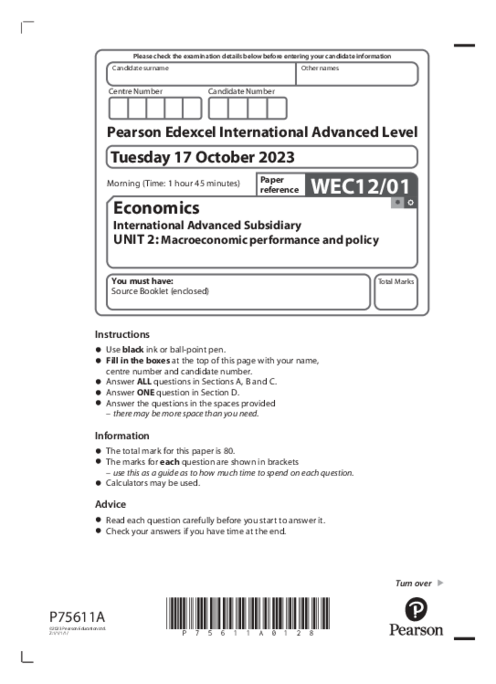Economics WEC12/01 October 2023
omer uner
1. Aggregate demand components: consumption, investment, government spending, exports, imports; aggregate demand formula: AD = C + I + G + (X - M); calculation examples from provided 2022 macroeconomic data .
2. Real GDP: inflation-adjusted measure of total economic output reflecting production value at constant prices; trend vs actual GDP growth rates and output gaps (positive/negative) illustrated in economic growth diagrams .
3. Supply-side policy types: free-market policies such as privatization, investment in infrastructure, education and training, and finance provision; policy impacts on productivity and economic growth.
4. Multiplier effect determinants: marginal propensity to save, tax, import, and consume influencing multiplier size; increase in multiplier caused by decrease in marginal propensity to tax or increase in marginal propensity to consume.
5. Central bank roles: lender of last resort, monetary policy implementer (interest rate adjustments, reserve requirements), stabilizing currency value, contrasting reflationary vs deflationary policies in different economies .
See More Unit 2 7 months ago
Economics (WEC) Subject directory
All resources in one place
Related Past Papers
Related Tutorials
Crash report
